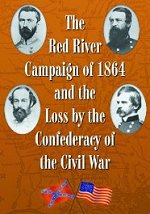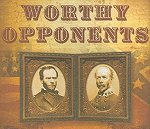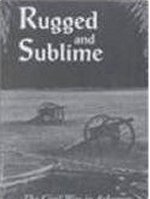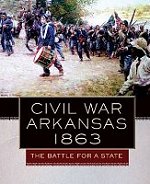Article Published with Permission from Reed's Bridge Battlefield .Org
BAYOU METO (REED'S BRIDGE) BATTLEFIELD,
JACKSONVILLE, PULASKI COUNTY
SUMMARY: The Bayou Meto (Reed’s Bridge) Battlefield is eligible for listing on the National Register of Historic Places under Criterion A with national significance by virtue of its status as the most intact of the three battlefields associated with the nationally significant Little Rock Campaign, and the battlefield that thus best represents that campaign. Is also is noteworthy as the battle that blunted the Union drive to capture the Arkansas capital and for its role as a catalyst leading to a duel a week later between two Confederate generals. Despite modern intrusions immediately adjacent to Highway 161, the majority of the core area of the battlefield is in remarkably good condition, approximating its appearance on August 27, 1863. Of the two major defining features of the battlefield, Highway 161 follows the roadbed of the old Military Road that Union forces followed and Bayou Meto remains a “steep-banked, miry stream.”
CLABORATION: After fighting a running battle at Brownsville on August 25, a force of the First Iowa Cavalry and Third Missouri Cavalry (U.S.) and sections of Lovejoy’s and Clarkson’s batteries drove up the Little Rock Road to feel out the Rebel positions at Bayou Meto. “The enemy were found posted in force at a position about 9 miles beyond Brownsville, estimated by Colonel Glover, commanding, at 6,000 strong,” Brig. Gen. John Wynn Davidson reported. Glover’s advance skirmishers made first contact, locating Rebel pickets about six miles from Brownsville and driving them back some two miles to entrenched positions about two miles east of Bayou Meto. “After a considerable artillery duel, I ordered Lovejoy to advance his section, in doing of which he had one cannoneer pierced through with solid shot and killed instantly, so well did the enemy have the range of the road,” Col. J.M. Glover reported. A swift reconnaissance by Glover led him to conclude that the Confederate position was more than he wanted to tackle with the force at hand, and the Yankees fell back to Brownsville. In addition to the hapless Yankee artilleryman, the engagement claimed the lives of three Confederates.
On August 27, Davidson returned in force to confront the Confederate horsemen at Bayou Meto. John Edwards of Brig. Gen. Jo Shelby’s command succinctly described the bayou and its importance: “The Bayou Meto was a low, sluggish stream, with a miry bed, abrupt banks, and its sides fringed with a heavy growth of timber. It was difficult to cross, and presented the only water at which a command could conveniently camp after leaving Bayou Two Prairie.” It was here that Brig. Gen. Lucius M. Walker’s horsemen would make a stand and here that Davidson’s thirsty troops would face their first serious combat of the campaign.
Glover’s troops again had the advance, and with a battalion of the Tenth Illinois Cavalry leading as skirmishers they began to move forward on the road to the Bayou Meto bridge. They first encountered Marmaduke’s horsemen some five miles east of the bridge, and after “a brisk fire” the Rebels fell back about two miles. The Tenth Illinois again hit the Confederate lines at this new position, losing a lieutenant to Southern marksmen. Davidson then ordered Glover’s entire brigade into action.
Glover placed his artillery in the center, on the road. Two battalions of the Third Missouri Cavalry (U.S.) climbed from their horses to the right of the road to fight as infantry; six squadrons of the Tenth Illinois covered their right flank. A third battalion of the Third Missouri, joined by foot soldiers of the Thirty-second Iowa infantry, comprised Glover’s left. “In this order, with a heavy line of skirmishers in front, the brigade moved forward,” the Union commander reported.
Facing the approaching Yankee cavalry, Brig. Gen. John S. Marmaduke placed Shelby’s Iron Brigade under B. Frank Gordon as his forward line of troops above Reed’s Bridge north of Bayou Meto. Marmaduke’s Brigade, under Col. William L. Jeffers, was formed below the bridge, along with Col. Archibald Dobbin’s Arkansas regiment. The Confederates would contest the advancing Unionists above the bridge, but braced for a heated defense from behind the natural rampart of Bayou Meto.
The Rebels’ first line of defense consisted of some 125 dismounted troopers of Shelby’s Brigade under Gordon, detailed to Marmaduke that morning to serve as skirmishers and accompanied by the “little teaser” prairie guns of Bell’s battery. These troops watched the approaching Yankees as “they pushed forward their columns impetuously until, coming upon the main body of our skirmishers, a roar of musketry sent death crippling through their ranks, completely breaking up their lines for the time in dismay and confusion.”
The “dismay and confusion” did not last long as the advancing Yankees drove Marmaduke back to a fixed line of defenses above Bayou Meto, which Glover described as “a very strong and elevated position, covered by extended rifle-pits on the left, where he made a more obstinate stand.”
A charge by the dismounted Third Missouri troopers on Glover’s right drove back the Rebels facing them and flanked the remaining Southerners out of their rifle pits, sending the entire force “in greatest disorder and confusion toward the Bayou Meto.” Other Third Missouri troopers and infantry of the Thirty- second Iowa drove back the Confederates facing them on the Union left. Davidson assisted them with a subterfuge by ordering drums beaten to convince the Confederates that they were facing concentrations of Yankee infantry in addition to Federal cavalry. “The rebs made a charge on our battery and when this was done a regt. of Cav Stood ready with pistol and carbine,” Francis Marion Emmons of the Seventh Missouri Cavalry (U.S.) wrote. “When they charged near enough these men with drums beat the charge and the rebs thought ten thousand infantry was on them when they turned and run our men fireing voley after voley and the Artillery using grape and canister pileing them in heaps After this the Genl Sat on his horse and laughed to see them run at the trick he played on them.” The Union troops on the left were “then thrown forward to the bayou, where we remained about three hours, getting an occasional shot at the enemy concealed on the other side.” The artillery was ordered up to shell the retreating Rebels, a bombardment that lasted around thirty minutes.
Having foreseen the probability of falling back across Bayou Meto, Capt. John Mhoon, a Rebel engineer, had given Reed’s Bridge “a thorough coating of tar and other inflammable material,” John Edwards remembered, “and as the last of the rear-guard crossed it, the torch was applied.”
The Union horsemen suddenly noticed the smoke in the distance and realized that the Rebels were burning the only crossing of the steep-banked stream. Davidson ordered Lt. Col. Daniel Anderson and the First Iowa Cavalry, comprising Glover’s reserve, to charge “in the face of a terrible fire of artillery and small-arms.” Confederate Colonel Gordon watched as the Iowans, “perhaps thinking the ‘frightened rebels in terror fled,’ charged down the road in splendid style, as if to save the bridge; but it were better had many of them never been born. The dense cloud of smoke from the crackling, burning bridge, like sorrow’s veil, hung between them and Bledsoe’s battery, and when the head of their long lines had nearly reached the bridge, these noble old guns sent shell and shot, winged with fury, screaming and hissing up their lines, scattering the mangled fragments of men and horses like chaff before the wind.”
“In making this charge, the regiment was exposed to a terrible fire from the enemy’s artillery and sharpshooters,” Lieutenant Colonel Anderson of the First Iowa, whose horse was shot from under him during the charge, wrote in his official report. “We reached the bridge, but not in time to save it; it was already enveloped in flames. . . . I then dismounted the command and went forward on foot. Never have I seen a greater coolness of courage displayed. Not a man flinched from performing his whole duty as a brave and loyal soldier. When I had ascertained the position of the enemy by severe skirmishing half an hour, I withdrew under cover of the hill and out of range of their guns.”
Glover’s men would attempt several more advances against the entrenched Rebels at Bayou Meto, most likely in an effort to recover the dozens of wounded Iowa horsemen of Anderson’s regiment, but the remainder of the day’s fighting would be done primarily by the artillery. Glover selected a position from which his artillery could relieve the now- dismounted First Iowa. “They opened with twelve or sixteen guns,” according to John Edwards. “Marmaduke’s artillery, though inferior in strength, replied as promptly and as vigorously. For nearly an hour the ring of musketry along the line was incessant, and the deep-toned artillery lent its voice to swell the diapason of harmonious discord.” The Yankee “shot and shell ripped and roared through the forest, tearing the trees around the battery into fragments, and plowing up the earth in the most approved demoniac style but all without avail,” Gordon wrote. “The long, rakish-looking pirate rifles [of Bledsoe’s Battery] seemed to shout in proud defiance, as with great precision they sent tearing through their ranks their iron missiles, driving them from position to position.”
Marmaduke ordered Lt. Charlie Bell’s small battery of prairie guns to a position near the bridge, “in open view of the enemy, and in point- blank range of their guns.” The Union artillery did not miss the opportunity, shattering Bell’s battery, killing Bell and seriously wounding one of Marmaduke’s aides before the battery was withdrawn to safety.
In retaliation, Marmaduke determined to punish the Yankee artillery “and for that purpose massed his six guns in a commanding position and opened a vigorous fire upon them.” Lt. R.A. Collins, who commanded an artillery battery in Shelby’s brigade, had “crossed the bayou and worked his way from point to point, despite the fire of their sharpshooters, until he had thoroughly reconnoitered their position.” An artillery duel ensued, and “by a natural impulse the men along the entire line on both sides, in a great measure, ceased operations, and employed themselves in watching the progress and results of the duel.” The Rebel artillery used Collins’ reconnaissance to deadly effect, firing with precision on the more numerous Union guns. As the disconcerted Yankee cannoneers took accurate fire from the batteries of Collins and Bledsoe “they entirely lost their coolness and precision, and sent their shells recklessly through the tops of the trees, destroying much foliage and frightening the wild birds terribly.”
Perhaps the best hope for a Union victory was on their left, where one hundred men of Young’s Battalion of Marmaduke’s brigade held the extreme right of the Confederate line, covering a crossing of Bayou Meto that “entirely turned the position.” These men, under a Major Bennett, resisted repeated attempts by Squadrons D and F of the First Iowa Cavalry to effect a crossing. Bennett “informed Marmaduke . . . that he was heavily pressed, and feared he could not hold his ground,” John Edwards recalled. “Marmaduke replied that he could spare him no men, and that he must beat back the enemy and make good his position. Bennett replied that he would do it, and did do it.” Had Davidson or Glover ordered some of the Iowans or Missourians idly pot-shotting at Rebels across the bayou on the Union left to join in a concerted attack against Young’s troops, they may have been able to turn Marmaduke’s flank and drive the Rebels from the field. However, this was not to be and the best opportunity that day for a Union victory passed them by.
As the combatant artillerists hammered away at each other, Glover discovered “a strong force of the enemy on this side of the bayou, on the right of our line.” The Tenth Illinois was given the task of forcing this rump remnant of Marmaduke’s force- -inadvertently cut off when the rest of the Rebels fell back across Reed’s Bridge--from their position, which they did, “putting them across the bayou after a very hot contest.” After skirmishing until late in the evening, Glover’s exhausted troops were ordered back to Brownsville, “getting into camp at midnight.” “The sun went down smoke- begrimed, red-faced, and furious,” Gordon concluded. Despite their tactical victory at Bayou Meto, the Confederates were ordered that night to retreat to within five miles of Little Rock, giving up the last substantial line of defenses east of the considerable works built northeast of the capital.
Federal casualties totaled seven killed and thirty-eight wounded, most from the ill-fated charge of the First Iowa Cavalry. Confederate losses were undisclosed, but at least two officers were killed and numerous soldiers wounded.

AFTERMATH: The battle of Bayou Meto marked the last serious Confederate opposition to the Union advance on Little Rock and blunted Maj. Gen. Frederick Steele’s seemingly unstoppable drive toward the capital. Following this battle, Yankee forces fell back to Brownsville as Maj. Gen. Frederick Steele sent out probes to determine the best route to flank Sterling Price’s Confederate infantry out of its strong works on the north side of the Arkansas River. He ultimately decided to strike via the Shallow Ford Road, driving Rebel troops from their camps at Ashley’s Mills near present-day Scott. On September 10, Union engineers built a pontoon bridge across the Arkansas River at which a bend enabled superior Yankee artillery to pour converging fire on Confederate defenders on the south side of the river. Federal cavalry poured across and, after confused fighting at Bayou Fourche near the present-day Little Rock airport, approached the capital. Price pulled his men from their entrenchments north of the river and retreated to southwest Arkansas, where most concentrations of Confederate troops would remain bottled up for most of the rest of the war.
Bayou Meto also proved to be the final straw in continuing tensions between two of the Confederate commanders. Generals Lucius M. Walker and John Sappington Marmaduke had been at odds since the July 4, 1863, battle of Helena, when Marmaduke maintained that Walker had failed to protect his left flank adequately as the Missourian’s troops attacked Union positions around Battery A. Marmaduke was again angered when Walker, now as senior officer in command of all Confederate cavalry, did not follow through on an opportunity to ambush attacking Union troops at Brownsville. The Missourian lost all patience after Walker declined several requests to come to the firing line from his headquarters in the rear during the fighting at Bayou Meto. After Bayou Meto, Marmaduke asked to be removed from under Walker’s command, or that his resignation be accepted. Price approved the transfer.
Walker took offense with Marmaduke’s actions and sent a letter to his former subordinate on September 2 asking if he had accused him of cowardice. An escalating war of words through a series of letters led to Walker’s aide Col. R.H. Crockett to “demand in his behalf of Gen. Marmaduke the satisfaction due to a gentleman.” Marmaduke’s aide Capt. John C. Moore replied that Crockett’s note “affords me the pleasure, as the friend of Gen. Marmaduke, to accord to the demand of satisfaction made therein.” Despite being ordered by Price to remain at their headquarters, two West Pointers met at dawn on September 6 at the Godfrey Lefevre plantation on the north side of the Arkansas River. Both generals fired once, missing. Marmaduke then fired his 1851 Navy Colt once more, hitting Walker with a shot that sliced through his right kidney and lodged in his spine. The Tennesseean died the next day, requesting on his deathbed that his friends “neither prosecute, nor persecute” Marmaduke. He was buried September 8 in Little Rock’s Mount Holly Cemetery, the victim of the last duel fought in Arkansas.
The Bayou Meto (Reed’s Bridge) Battlefield is eligible for listing on the National Register of Historic Places under Criterion A with national significance by virtue of its status as the most intact of the three battlefields associated with the nationally significant Little Rock Campaign, and that thus best represents the campaign. Is also is noteworthy as the battle that blunted the Union drive to capture the Arkansas capital and for its role as a catalyst leading to a duel a week later between two Confederate generals. Despite modern intrusions immediately adjacent to Highway 161, the majority of the core area of the battlefield is in remarkably good condition, approximating its appearance on August 27, 1863. Of the two major defining features of the battlefield, Highway 161 follows the roadbed of the old Military Road that Union forces followed and Bayou Meto remains a “steep-banked, miry stream.”
|












